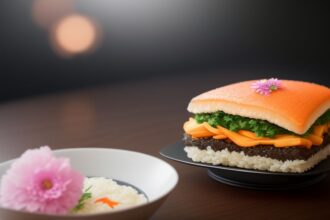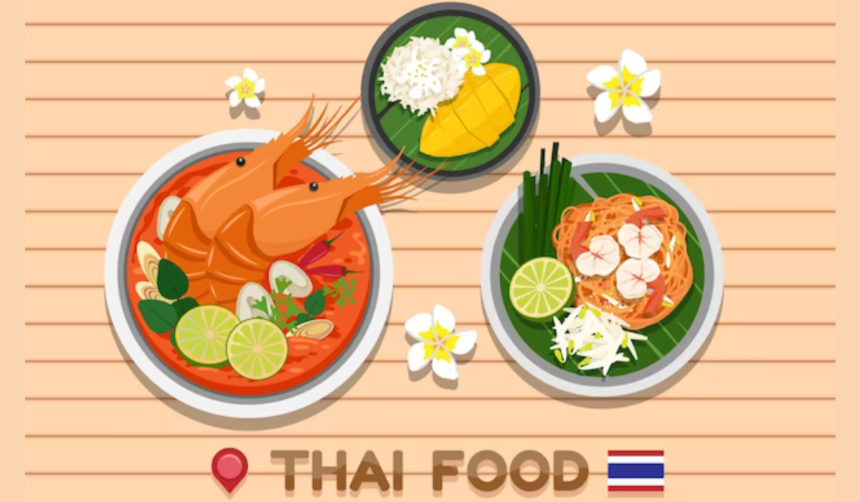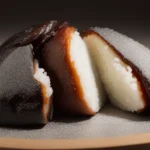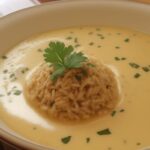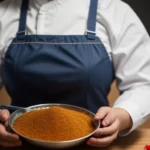Thailand is a country known for its vibrant culture, stunning landscapes, and of course, its delicious cuisine. Thai food is renowned for its complex flavors, fresh ingredients, and unique combinations of spices and herbs. From spicy curries to sweet desserts, Thai cuisine offers a diverse range of dishes that cater to every palate.
In this article, we will take you on a culinary journey through Thailand, exploring the exotic flavors and dishes that make Thai cuisine so popular around the world. Join us as we delve into the rich tapestry of Thai cooking, from street food to fine dining, and discover the unique ingredients and techniques that make Thai cuisine truly one-of-a-kind.
1. The Flavors of Thai Cuisine: A Brief Overview
Thai cuisine is characterized by its bold and diverse flavors, which are achieved through the use of fresh herbs and spices. Thai food is known for its balance of sweet, sour, salty, and spicy flavors, creating a harmonious blend of taste sensations in every dish. Some of the key ingredients used in Thai cooking include lemongrass, galangal, kaffir lime leaves, and Thai basil, which add a unique depth of flavor to every bite.
2. Thai Street Food: An Introduction
One of the best ways to experience Thai cuisine is through its vibrant street food culture. Thai street food vendors can be found on practically every corner, serving up delicious dishes that range from spicy noodle soups to savory grilled meats. Some popular street food dishes to try include pad Thai, som tum (green papaya salad), and khao pad (fried rice).
3. Tom Yum Goong: A Spicy and Sour Soup
Tom Yum Goong is a classic Thai soup that is known for its bold and zesty flavors. Made with a flavorful broth infused with lemongrass, kaffir lime leaves, and Thai chilies, this soup is packed with fresh shrimp, mushrooms, and tomatoes. The addition of fish sauce and lime juice gives the soup its signature sweet, sour, and spicy taste.
4. Green Curry: A Spicy and Fragrant Delight
Green curry is a Thai classic that is beloved for its creamy texture and aromatic flavors. Made with a blend of green chilies, lemongrass, galangal, and kaffir lime leaves, this curry is typically cooked with meat or vegetables and served over steamed rice. The dish is spicy, fragrant, and full of depth, making it a favorite among many Thai food enthusiasts.
5. Pad Thai: A Signature Thai Dish
One of the most famous Thai dishes, pad Thai is a stir-fried noodle dish that is packed with flavor and texture. The dish typically includes rice noodles, shrimp, tofu, egg, and bean sprouts, all tossed in a sweet and tangy tamarind sauce. Garnished with crushed peanuts, lime wedges, and fresh cilantro, pad Thai is a perfect balance of sweet, sour, and savory flavors.
6. Thai Desserts: A Sweet Ending
Thai cuisine is not just about savory dishes – it also boasts a wide array of delicious desserts that are sure to satisfy your sweet tooth. From coconut-infused sticky rice to mango and sticky rice, Thai desserts are known for their use of fresh fruits, coconut milk, and sweet syrups. Some popular Thai desserts to try include tub-tim grob (water chestnuts in coconut milk) and kanom krok (coconut pancakes).
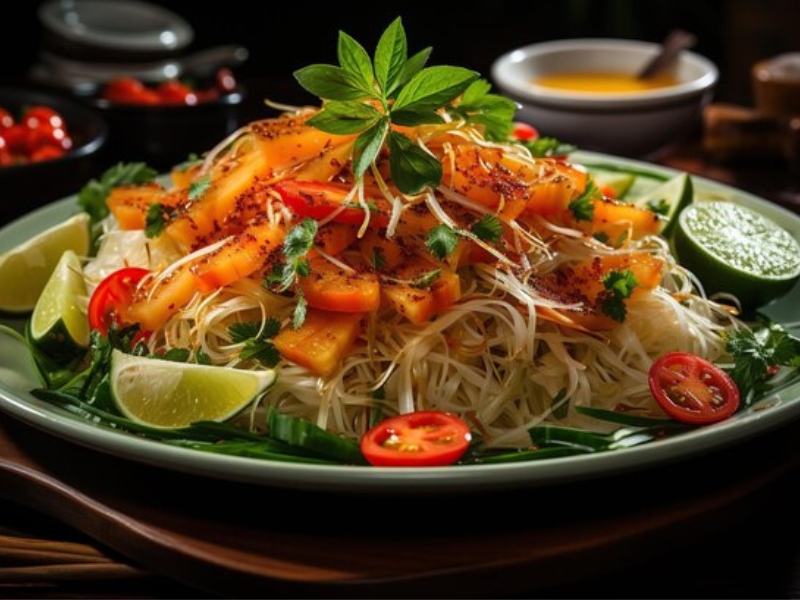
7. Som Tum: A Refreshing Papaya Salad
Som tum is a popular Thai salad that is made with green papaya, tomatoes, green beans, peanuts, and chilies. The salad is dressed with a tangy dressing made from lime juice, fish sauce, and palm sugar, giving it a sweet, sour, and spicy flavor profile. Som tum is a refreshing and light dish that is perfect for hot summer days.
8. Massaman Curry: An Exotic Delight
Massaman curry is a rich and flavorful dish that is influenced by Persian and Indian cuisine. Made with a blend of spices such as cinnamon, cardamom, and star anise, this curry is cooked with tender chunks of meat, potatoes, and peanuts. The dish is sweet, savory, and aromatic, making it a favorite among many Thai food lovers.
9. Thai Cooking Techniques: A Closer Look
Thai cuisine is known for its unique cooking techniques, which are designed to bring out the natural flavors of the ingredients. Some common techniques used in Thai cooking include stir-frying, braising, and steaming. Thai cuisine also utilizes a wide range of cooking utensils, such as woks, mortar and pestles, and bamboo steamers, which help to create authentic and flavorful dishes.
10. Fresh Ingredients: The Key to Thai Cuisine
One of the hallmarks of Thai cuisine is its reliance on fresh and seasonal ingredients. Thai chefs take great care to source the best produce, herbs, and spices, which are often purchased from local markets and vendors. From fresh seafood to fragrant herbs, the quality of the ingredients used in Thai cooking plays a crucial role in the overall taste and texture of the dishes.
11. Thai Food Culture: A Culinary Tradition
Thai food culture is deeply rooted in tradition, family, and community. Thai meals are often shared among loved ones, with dishes served family-style and eaten with rice or noodles. Food is an important part of Thai culture, with festivals and ceremonies often centered around communal meals and offerings. Thai cuisine is a reflection of the country’s rich history and traditions, with each dish telling a unique story.
12. Regional Flavors: A Taste of Thailand
Thailand is a diverse country with distinct regional cuisines that vary in flavors, ingredients, and cooking techniques. From the spicy dishes of the southern region to the fragrant curries of the central region, each part of Thailand offers a unique culinary experience. Some regional dishes to try include khao soi (northern curry noodle soup), gaeng som (sour curry from the south), and sai oua (northern Thai sausage).
13. Vegetarian and Vegan Options: A Growing Trend
With an increasing number of people adopting plant-based diets, Thai cuisine is continuously evolving to offer more vegetarian and vegan options. Thai cuisine is naturally vegetarian-friendly, with many dishes featuring tofu, vegetables, and aromatic spices. Some popular vegetarian dishes to try include pad pak (stir-fried vegetables), tom kha pak (coconut milk soup with vegetables), and green mango salad.
14. Thai Beverages: A Refreshing Delight
In addition to its delicious food, Thailand is also known for its refreshing and exotic beverages. From Thai iced tea to fresh coconut water, there are plenty of beverages to sip on while exploring the country’s culinary scene. Thai herbal teas, fruit smoothies, and tropical juices are also popular choices for those looking for a cool and refreshing drink.
15. Culinary Tours and Cooking Classes: A Hands-On Experience
For those looking to immerse themselves in the world of Thai cuisine, culinary tours and cooking classes offer a unique and hands-on experience. From exploring local markets to learning traditional cooking techniques, these tours provide a deeper insight into the world of Thai food. Whether you’re a novice cook or a seasoned foodie, a culinary tour or cooking class in Thailand is a great way to discover the exotic flavors and ingredients of Thai cuisine.
conclusion
Thai cuisine is a culinary journey that promises to excite and tantalize your taste buds. From the bold flavors of curries to the refreshing salads and desserts, Thai cuisine is a celebration of fresh ingredients, complex spices, and unique cooking techniques. Whether you’re exploring the bustling street food markets of Bangkok or dining at a fine restaurant, Thai cuisine offers a diverse and delicious range of dishes that cater to every palate. So why wait? Embark on an adventure through the exotic flavors of Thailand and discover the culinary delights that await you.
FAQs about “Discover the Exotic Flavors of Thailand: A Culinary Journey Through Thai Cuisine”
- What defines Thai cuisine, and what makes it exotic? Thai cuisine is renowned for its bold flavors, aromatic herbs, and vibrant colors. It’s characterized by a delicate balance of sweet, sour, salty, and spicy tastes, creating a symphony of flavors in each dish. The exoticism of Thai cuisine comes from its use of unique ingredients such as lemongrass, galangal, kaffir lime leaves, and Thai bird chilies, which impart distinct and memorable tastes.
- What are some essential ingredients in Thai cooking, and where can they be found? Essential ingredients in Thai cuisine include staples like coconut milk, fish sauce, Thai basil, and rice noodles. Aromatic herbs like cilantro and Thai holy basil also play crucial roles in many dishes. These ingredients are readily available in Asian supermarkets, specialty stores, or online retailers catering to international foods.
- Are there vegetarian or vegan options within Thai cuisine? Absolutely! Thai cuisine offers a plethora of vegetarian and vegan options that are both flavorful and satisfying. Dishes like pad Thai (stir-fried noodles), green curry with tofu, and papaya salad (som tum) can easily be made vegetarian or vegan by substituting animal-based ingredients with plant-based alternatives like tofu, mushrooms, or extra vegetables.
- How can I recreate Thai dishes at home if I’m not familiar with the cuisine? Recreating Thai dishes at home can be an exciting culinary adventure. Start by exploring beginner-friendly recipes such as tom yum soup, Thai green curry, or mango sticky rice. Many online resources, cookbooks, and cooking shows provide detailed instructions and helpful tips to guide you through the process. Experimenting with different Thai herbs, spices, and sauces will allow you to unlock the diverse flavors of Thai cuisine.
- Are there any cultural aspects or traditions associated with Thai cuisine? Thai cuisine is deeply intertwined with Thai culture and traditions. Meals are often communal experiences shared with family and friends, emphasizing hospitality and warmth. Traditional Thai cooking methods, such as stir-frying, steaming, and grilling, have been passed down through generations, preserving the authenticity of Thai flavors. Additionally, Thai festivals and celebrations often feature special dishes and culinary rituals, reflecting the rich cultural heritage of the country.
Advantages:
- Cultural immersion: The title suggests a journey through Thai cuisine, providing readers with an opportunity to immerse themselves in the culture and culinary traditions of Thailand.
- Exotic appeal: The use of the term “exotic flavors” may attract readers who are intrigued by the unique and diverse tastes found in Thai cuisine.
- Gastronomic adventure: Readers can anticipate a culinary journey, exploring a variety of Thai dishes, ingredients, and cooking techniques.
- Educational value: The exploration of Thai cuisine offers readers the chance to learn about the history, geography, and cultural significance of different Thai dishes and ingredients.
- Inspiration for cooking: The title may inspire readers to experiment with Thai cooking at home, introducing them to new flavors and expanding their culinary skills.
Disadvantages:
- Stereotyping: The term “exotic” may perpetuate stereotypes about Thai cuisine, portraying it as foreign or unusual, rather than appreciating its richness and complexity.
- Simplification: The title may oversimplify the diversity of Thai cuisine, which varies significantly across different regions of Thailand, potentially glossing over regional nuances and specialties.
- Cultural appropriation: Without proper context and understanding, exploring Thai cuisine could risk appropriating cultural elements without acknowledging their significance or respecting their origins.
- Accessibility: Some ingredients used in Thai cuisine may be difficult to find outside of Thailand or major metropolitan areas, limiting the practicality of replicating recipes for some readers.
- Dietary considerations: Thai cuisine often includes ingredients like fish sauce, shrimp paste, and peanuts, which may not be suitable for individuals with dietary restrictions or allergies, potentially excluding certain readers from fully participating in the culinary journey.



